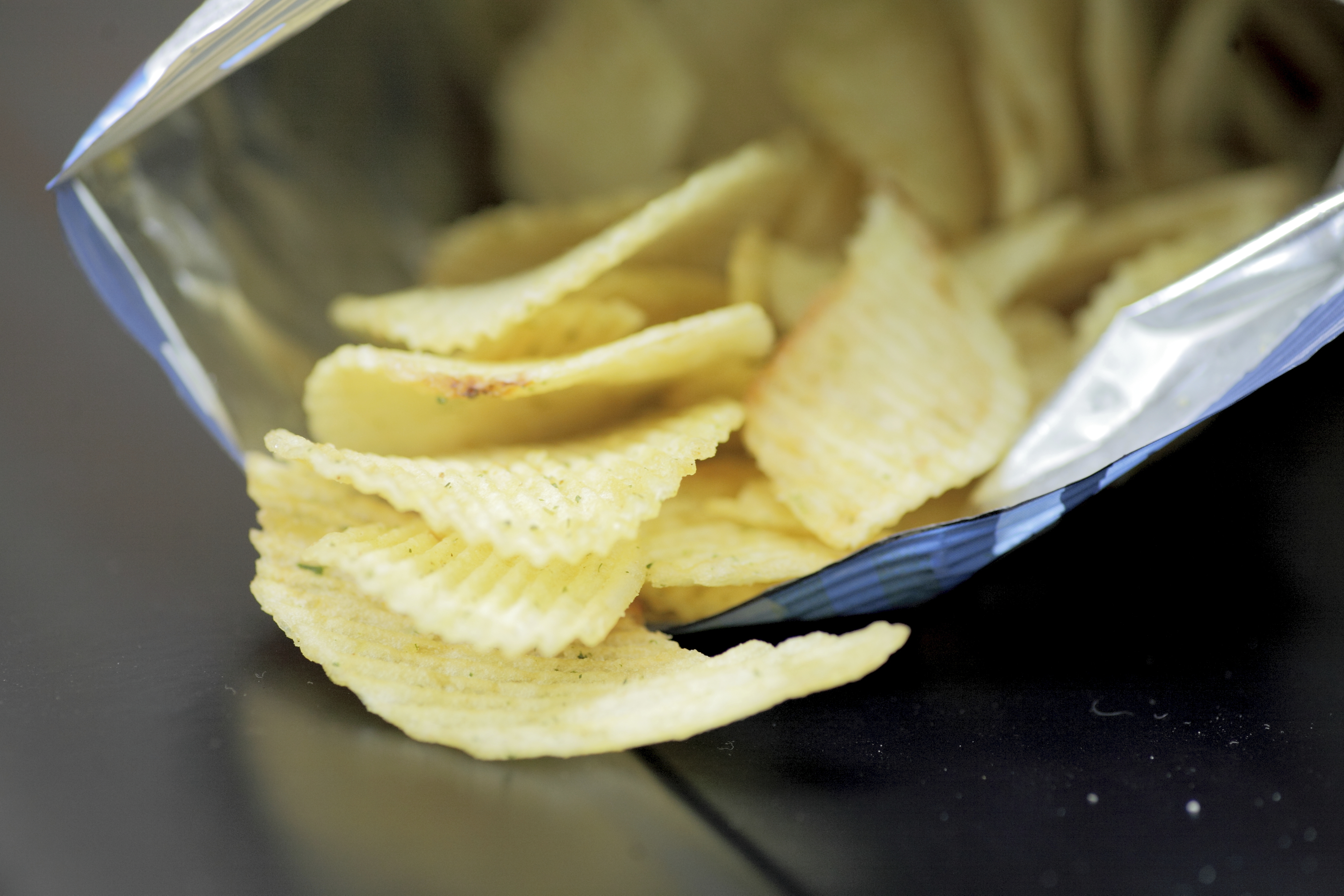How a bag of potato chips can spy on you
A team of MIT computer scientists have figured out how to do just that, turning one bag into a "visual microphone"


When you speak, your voice makes sound waves. Sound waves are just tiny movements in the air around you, so when you speak, the objects around you also move, ever so slightly. A potted plant, a glass of water, or a bag of chips will vibrate in response to the pressure changes caused by your voice. Might it be possible to reconstruct what someone was saying from video of nearby objects alone? A team of MIT computer scientists have figured out how to do just that, turning a chip bag into a "visual microphone."
This amazing video shows three demonstrations of sound being recovered through video: one where a melody is captured in the vibrations of leaves on a plant, another where speech is captured in the vibration of a chip bag, and a third where a song is identified solely through a video of the ear buds through which the song was playing.
The technique involves computations on pixel-to-pixel differences over time that effectively magnify small movements. Those worried about the potential eavesdropping or spying applications of the technique can take comfort in the fact that it works best with very high rate, memory intensive video capture — but not too much comfort. As shown in the video, it is possible to get a much better than expected result with a regular consumer camera by taking advantage of artifacts resulting from a "rolling shutter" capture. So watch what you say if the cameras are rolling, or at least clean up your snack wrappers before you say it.
The Week
Escape your echo chamber. Get the facts behind the news, plus analysis from multiple perspectives.

Sign up for The Week's Free Newsletters
From our morning news briefing to a weekly Good News Newsletter, get the best of The Week delivered directly to your inbox.
From our morning news briefing to a weekly Good News Newsletter, get the best of The Week delivered directly to your inbox.
There's more at the pages of lead researchers Abe Davis and Michael Rubenstein. Rubenstein also has a fascinating TEDx talk about the motion magnifying technique that shows how regular video can be transformed to show blood pumping behind skin, a baby's breathing, or a wine glass pulsating to a singer's voice.
A free daily email with the biggest news stories of the day – and the best features from TheWeek.com
Arika Okrent is editor-at-large at TheWeek.com and a frequent contributor to Mental Floss. She is the author of In the Land of Invented Languages, a history of the attempt to build a better language. She holds a doctorate in linguistics and a first-level certification in Klingon. Follow her on Twitter.
-
 Political cartoons for December 6
Political cartoons for December 6Cartoons Saturday’s political cartoons include a pardon for Hernandez, word of the year, and more
-
 Pakistan: Trump’s ‘favourite field marshal’ takes charge
Pakistan: Trump’s ‘favourite field marshal’ takes chargeIn the Spotlight Asim Munir’s control over all three branches of Pakistan’s military gives him ‘sweeping powers’ – and almost unlimited freedom to use them
-
 Codeword: December 6, 2025
Codeword: December 6, 2025The daily codeword puzzle from The Week

